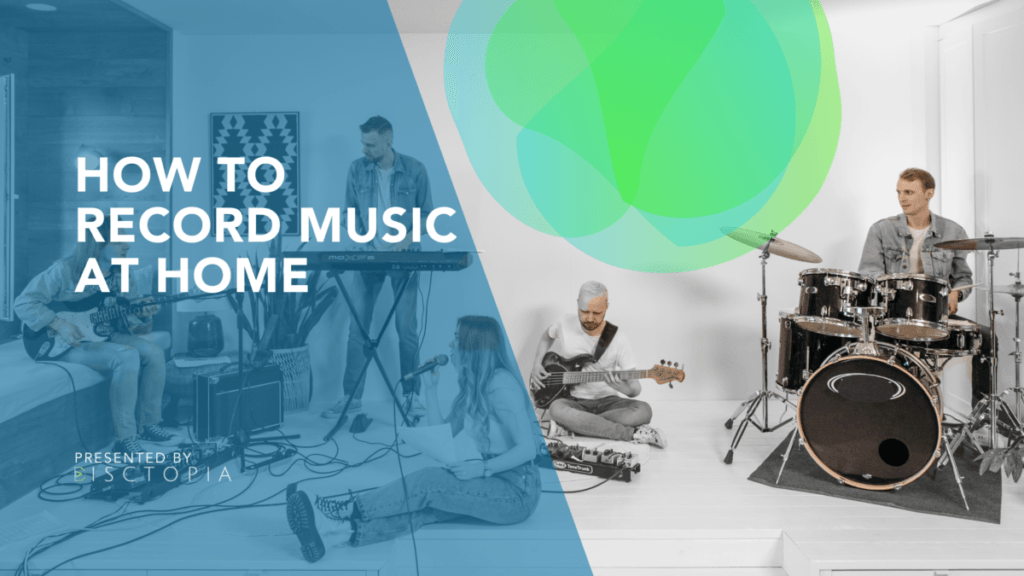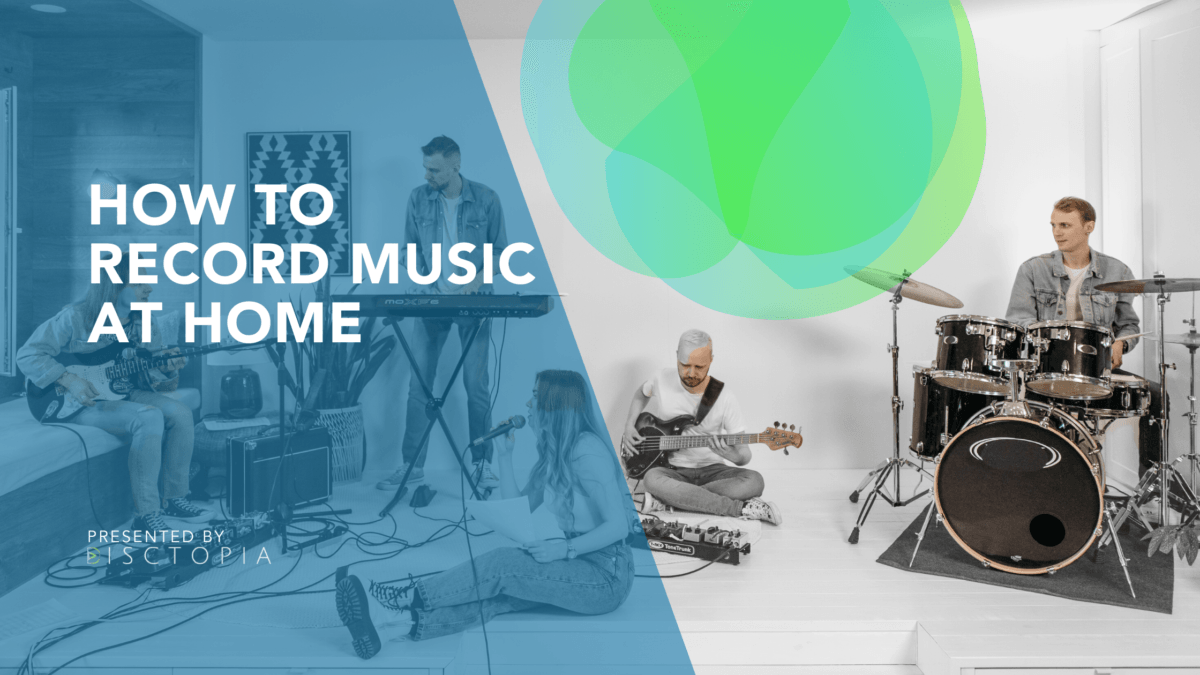
Recording music is one of the most critical parts of being an indie music artist. You need good sound quality. If not, your songs won’t be as
appealing to fans and listeners, no matter how hard you work on them.
This guide will cover everything you need to know about recording music at home. We’ll discuss different equipment for beginner indie music artists and the biggest independent artists. We'll also highlight how to get the best out of your
studio gear.
Why Record Your Music at Home?
Recording music at home can be very beneficial to your career as an indie music artist. You will have to pay for the time and equipment to record your songs in a professional studio. This can cost thousands of dollars per song.
But suppose you’re starting and haven’t yet earned any money from making music. Then spending that much on each song might not be workable.
This is where recording at home comes in handy. You can record yourself using a simple home studio setup. You can do so in the privacy of your own space without having to pay for expensive studio time.
Tips for Recording Your Music at Home
Follow these tips to help you record your music at home:
Use a DIY Sound Treatment. It's Perfect for Beginner Indie Music Artists
An upcoming indie music artist will need a lot of work to afford the equipment for a professional recording studio. But don't worry! You don’t need expensive gear to make sound recordings—just the proper setup and techniques.
One of the best ways to improve your sound is by using DIY sound treatment. This means hanging up sheets in your room. This way, only those sounds bounce off when you record vocals, guitars, or drums.
Scrap the Computer, Get a Recording Console. The Expense is Worth It
There’s no doubt that computers are great for audio recording. But if you want the best sound possible, it can be worth investing in a standalone recording console. The difference is incredible. Many professional studios and the
biggest independent artists use them instead of computers.
Recording consoles can be expensive, but they are worth their price tag. If you want a better-quality product, invest in recording consoles.
Build Your Booth, Cubicle, or Room. You Need the Privacy
Recording your music at home is a great way to save money. But getting the right recording environment can take time and effort. Do you want a professional studio without spending hundreds of dollars on gear and materials? Then consider building your booth or cubicle.
This is especially important if you plan on recording vocals. A proper voice booth will keep out external sounds. It will also allow the singer to hear themselves.
Get Creative with DAWS (Digital Audio Workstation). The Biggest Independent Artists Already Use Them
A digital audio workstation (DAW) is software that allows you to record, edit, mix, and master your music. You can download a basic DAW for free from the internet. However,
some great DAWS are available for only $50 or less.
The good news is that many big-name indie music artists use these programs to create their albums. Most of them don't tell anyone about it. So if you're ready to step up your game and make some serious tracks, consider investing in a DAW.
They're great for recording vocals and other instruments. They also have tons of built-in effects that you can use to spice up your recordings.
Focus on Quality Control. That's How You Become the Best
Yes, you're recording at home. But that doesn't mean you should cut corners and record music that sounds like you made it in your living room. You're an artist who wants to release the best work possible, so ensure you have a good pair of headphones.
These will help prevent audio leakage. This sound leaks into other microphones, which can spoil later takes. If possible, invest in an acoustic foam kit as well. It will reduce the echo in your space and create a professional-sounding recording.
The biggest independent artists understand that quality control is essential. They have the equipment to ensure that their music sounds great. This means investing in a good pair of headphones or speakers. Also, always listen back to your recordings before
sharing them with others.
Invest in a Microphone That’s Right for You. If You Don't, You're Messing Things Up
There are various microphones for indie music artists. If you’re a beginner, starting with a USB microphone is best. These are easy to use and don’t require additional equipment. Just plug them into your laptop or desktop computer, and you're ready.
If you want more control over your recording quality, invest in an XLR microphone. These are more expensive. However, they offer better sound recording capabilities than their USB counterparts.
The right microphone works as a creative tool. It allows you to record vocals and instruments with professional quality. But if you don’t have the right equipment, there's no point in even trying.
Create an Easy Pre-Production Checklist. It helps organize Yourself.
The biggest independent artists use pre-production. It helps them get their act together before they hit the studio. This makes it easier for them to focus on being creative while recording.
It would help if you had a checklist of everything that needs to be done before recording. This helps keep your ideas organized. That way, you're using your time effectively in the studio (and therefore, money).
Some things you can include in your
pre-production checklist are:
- Make sure all of your equipment works correctly.
- Organize your songs into a specific order (if you're recording an album).
- Create a list of instruments and equipment. You might need to rent or borrow them for the recording process.
- Find out who will play what on each track. This way, you know where to put them in the mix later. This is especially important if there are multiple vocalists.
Record Scratch Tracks. It's Good to Test Different Instruments and Vocal Mics
You might be tempted to grab your favorite microphone and start recording. But testing several mics and instruments is always a good idea before committing to them. This helps you find the best sound for each track. This is especially helpful if you're recording multiple instruments.
For example, you might have an acoustic guitar solo that needs to be recorded first thing in the morning. But later in the day, when everyone else has arrived, they might want to record drums too.
Avoid Mixing when Tired or Emotional. You Don't Need Clouded Judgment
Most beginner indie music artists will mix their music while still excited. But there is a problem with this. It's difficult to judge the quality of your work when emotions are running high.
This can lead to missed opportunities or poor decisions. This can include setting a song too loud and clipping off parts of the vocals.
Of course, fans can spot low-quality mixes. Once they associate you with poor mixes, they might believe that all your music is low-quality.
You want your music to be perfect, so take some time away from it and return when you're ready to judge it objectively. This doesn't mean you shouldn't listen to your music while working. Ensure that when you finish with a mix, you give yourself enough time before jumping into another one.
Build Multiple Versions of your Mix. You Want to Compare Differently EQ’d Ones at a Later Date
Music mixing is an art form. It can take years to master. When you're just starting, it's crucial to grasp the basics and build your skills. But it would be best if you continued learning once you've got a solid foundation.
One way to do this is to experiment with different techniques and compare the results. For example, try using different EQ curves on a kick drum or bass line and see what you like best.
Or try mixing your track with different amounts of reverb, delay, and distortion. You can even use automation to sculpt the sound in unique ways.
Be Creative. Use Effects to Bring Out the Character of Each Track
The biggest independent artists have mastered mixing. They use effects to bring out the character of their tracks. They don't just put a compressor on everything and call it a day. Instead, they handpick the right effect for each instrument.
This often means using different effects on similar-sounding instruments.
For example, let's say you want to add depth and warmth to your track's bass line. Try adding some reverb to it instead of EQing out frequencies that are causing problems. This is what some artists do.
Final Thoughts
Recording music at home is an excellent way for indie music artists to compete with the big guys. You can make your unique sounds. You also have complete control over every aspect of your production process. Yes, there are many things you need to learn before you can make quality music. But this guide will help get you started on the right track.

 Recording music is one of the most critical parts of being an indie music artist. You need good sound quality. If not, your songs won’t be as appealing to fans and listeners, no matter how hard you work on them.
This guide will cover everything you need to know about recording music at home. We’ll discuss different equipment for beginner indie music artists and the biggest independent artists. We'll also highlight how to get the best out of your studio gear.
Recording music is one of the most critical parts of being an indie music artist. You need good sound quality. If not, your songs won’t be as appealing to fans and listeners, no matter how hard you work on them.
This guide will cover everything you need to know about recording music at home. We’ll discuss different equipment for beginner indie music artists and the biggest independent artists. We'll also highlight how to get the best out of your studio gear.



